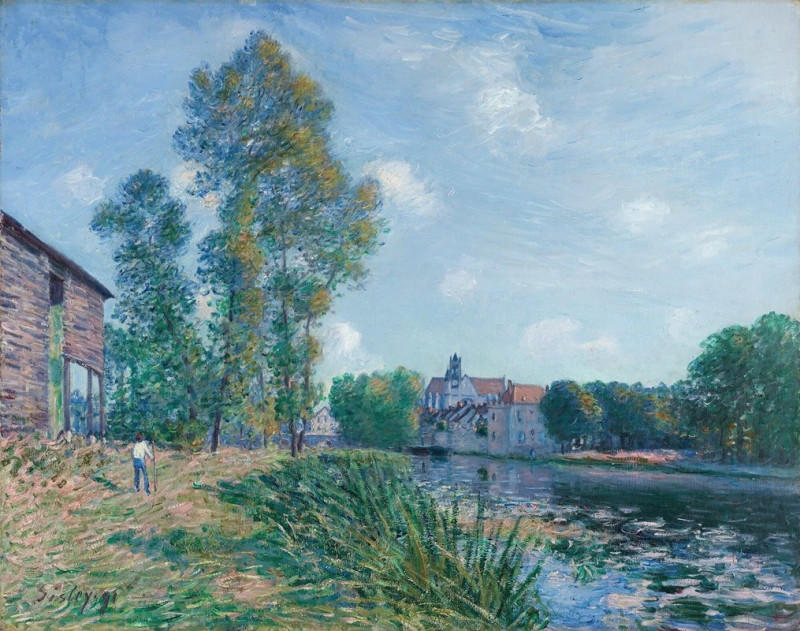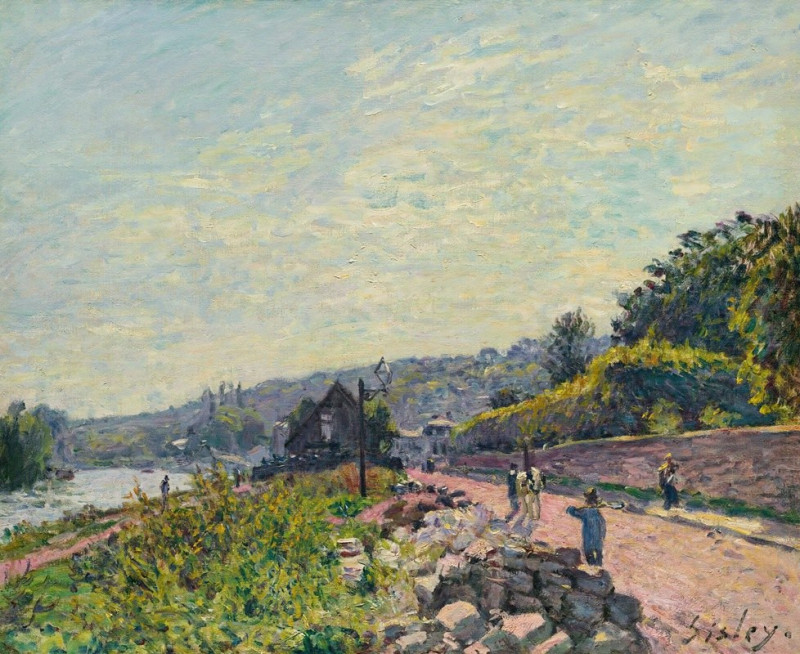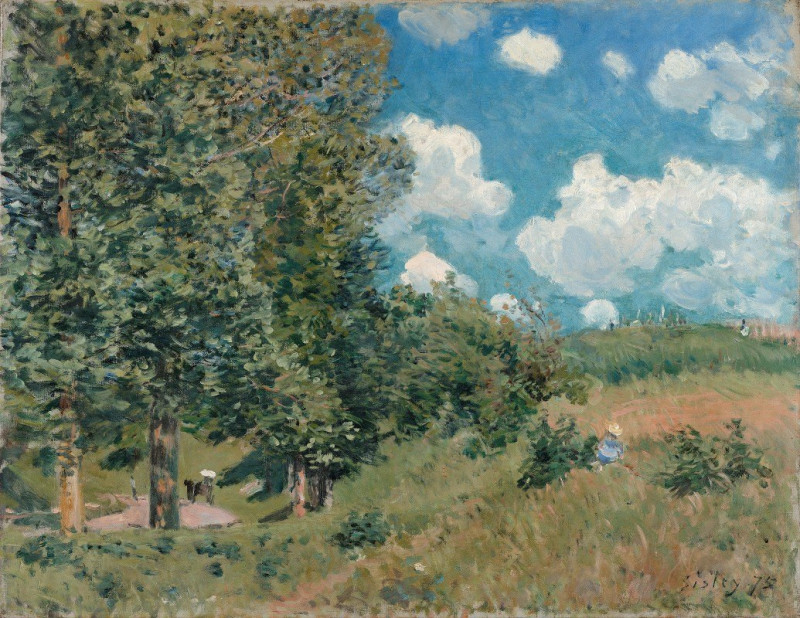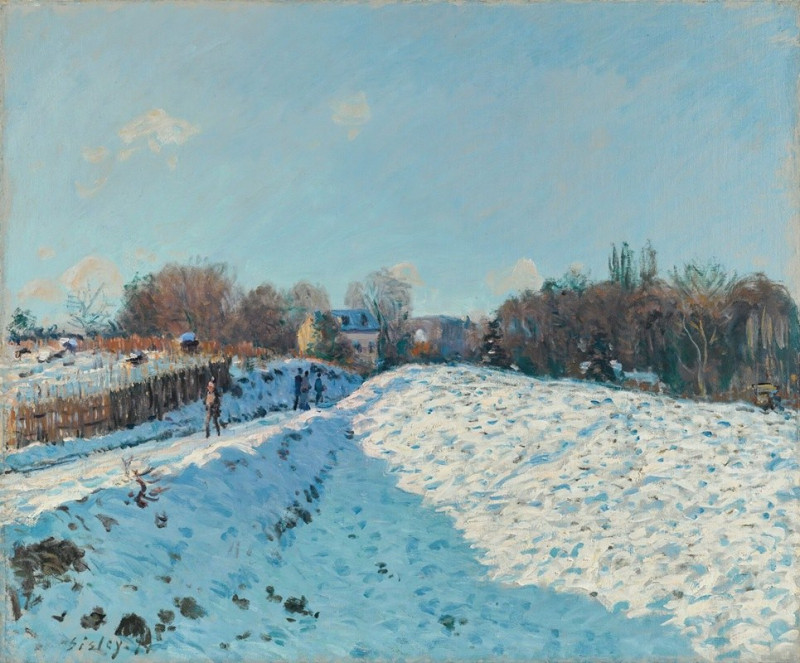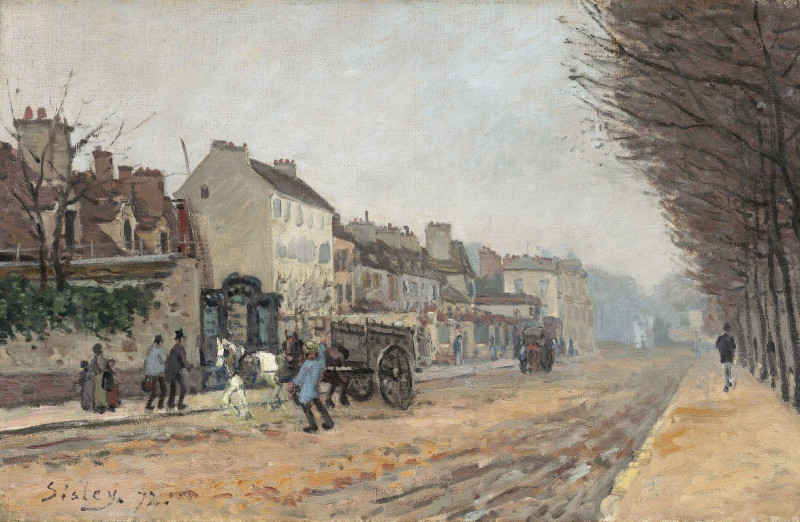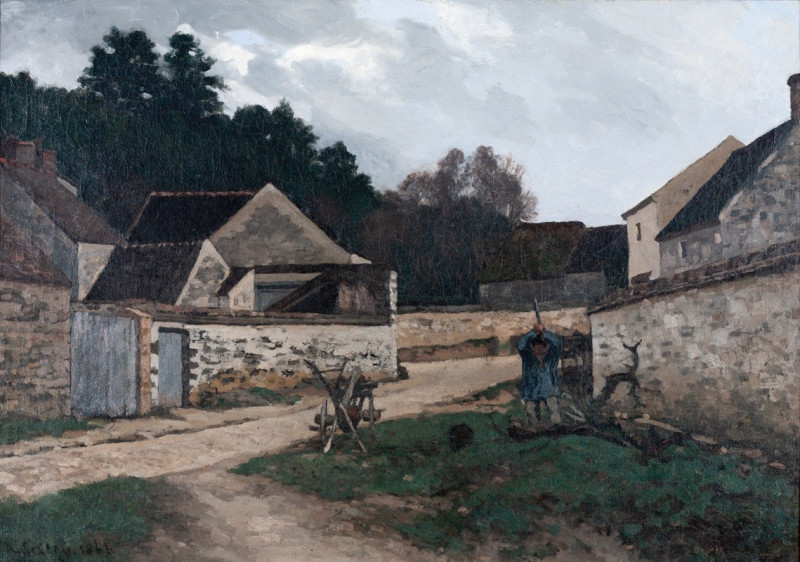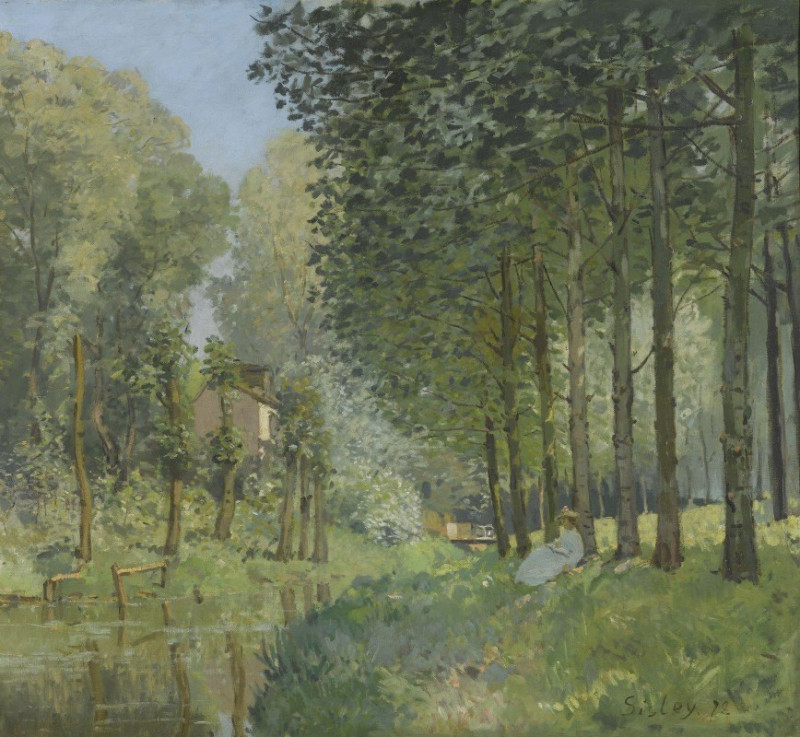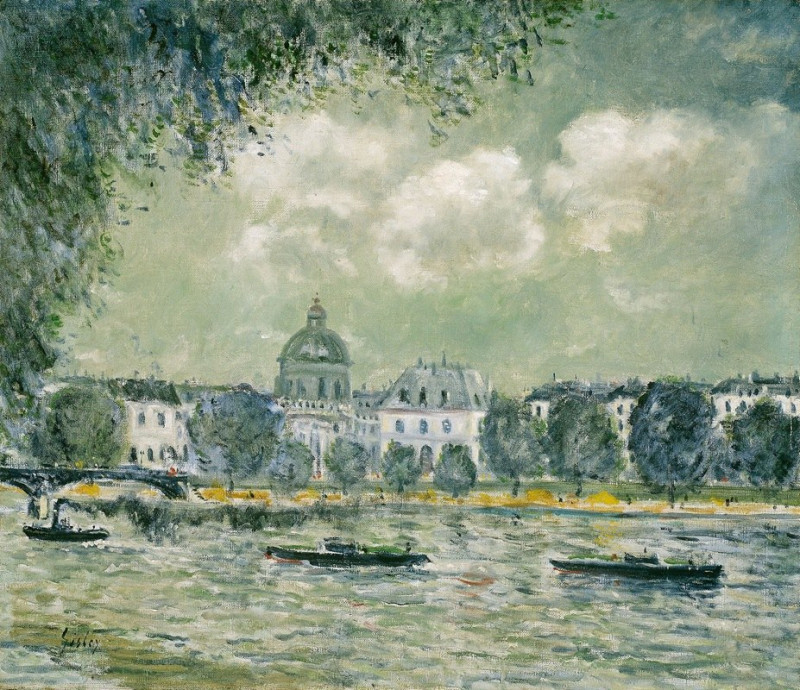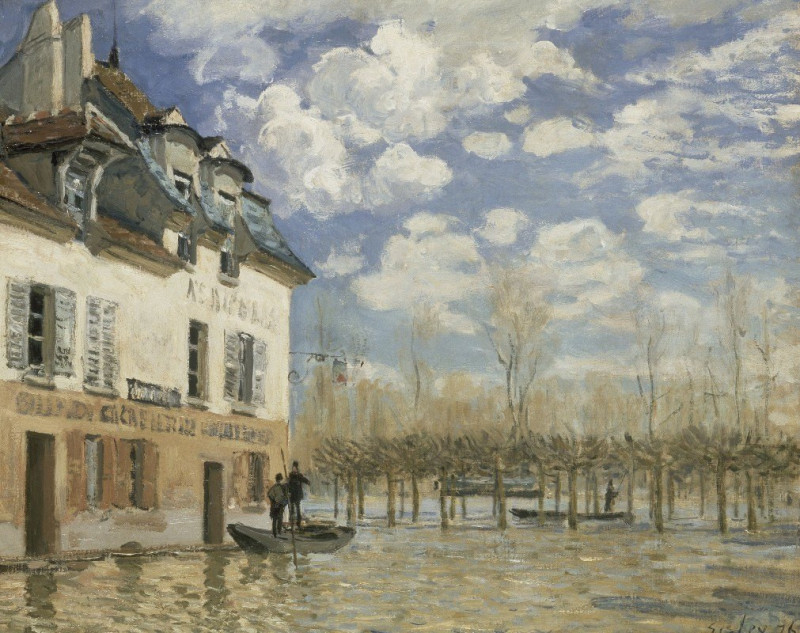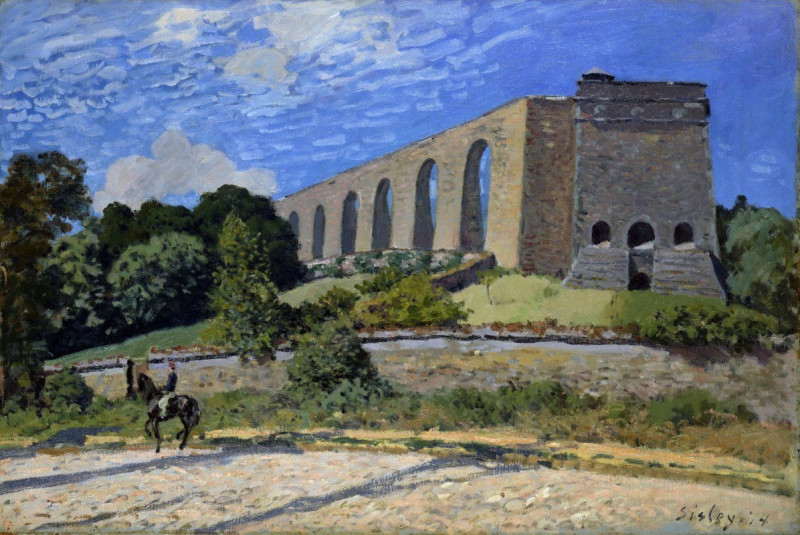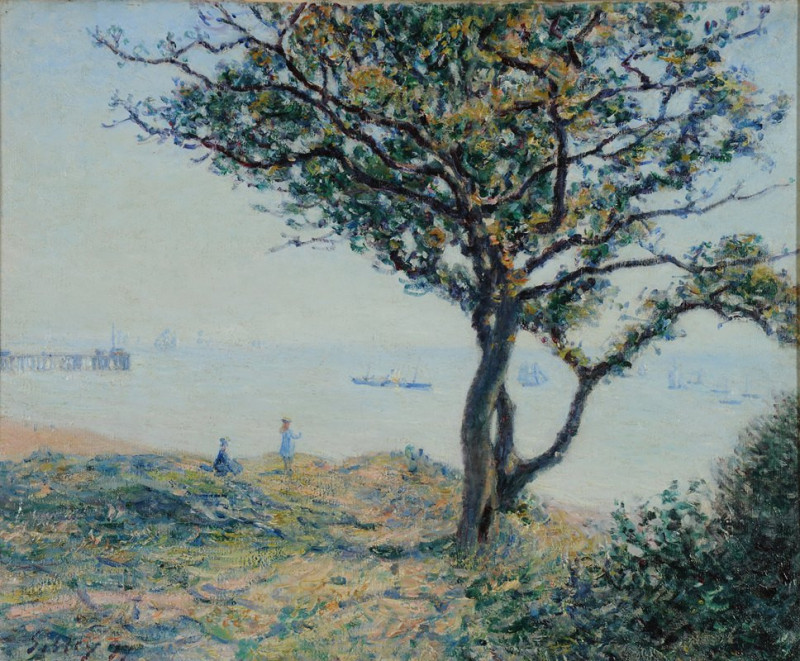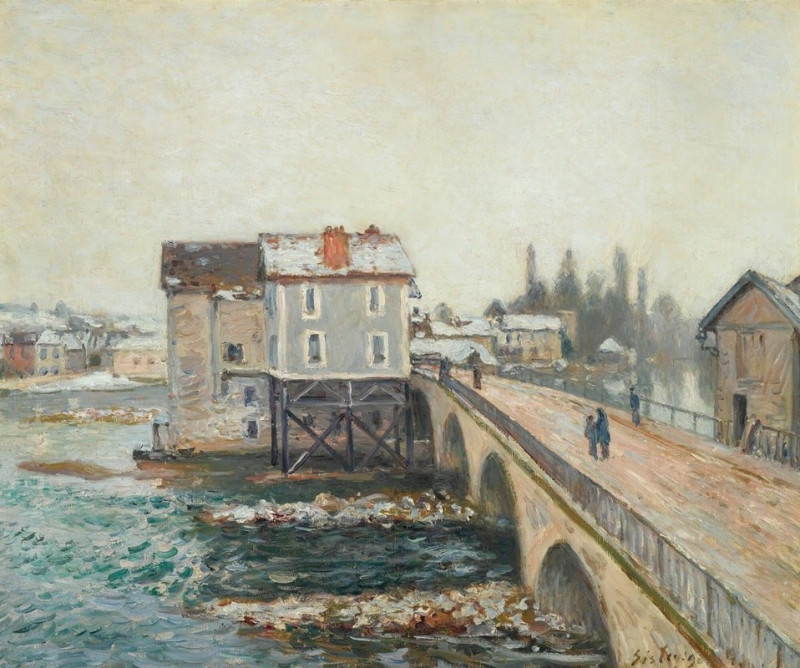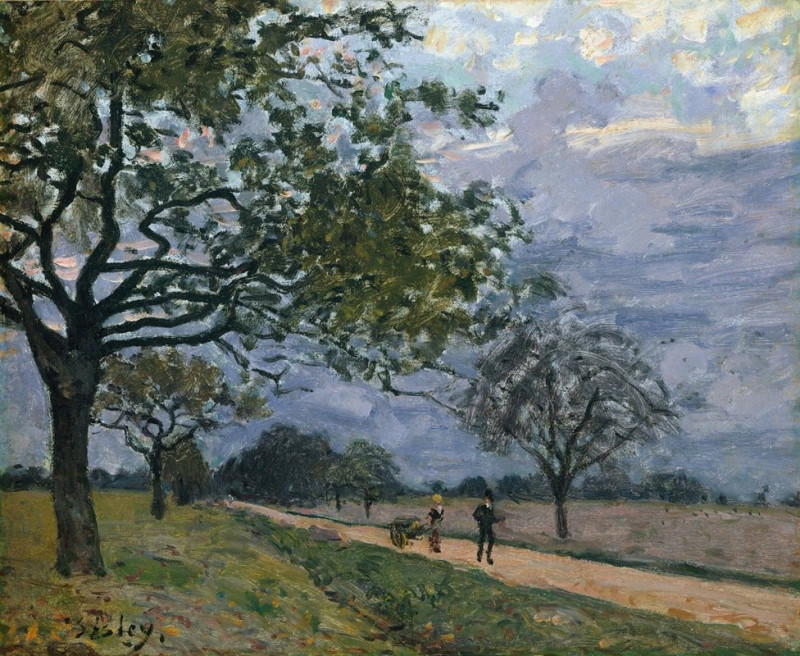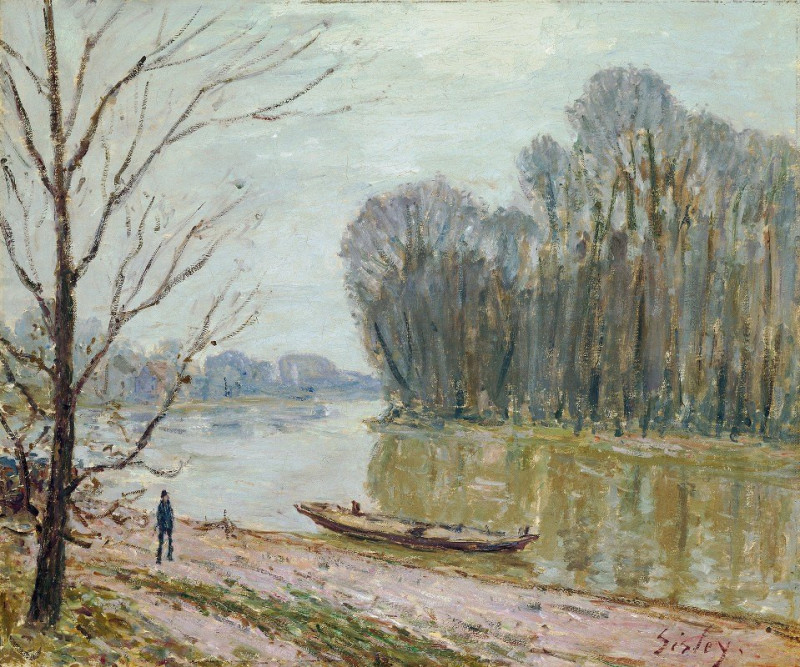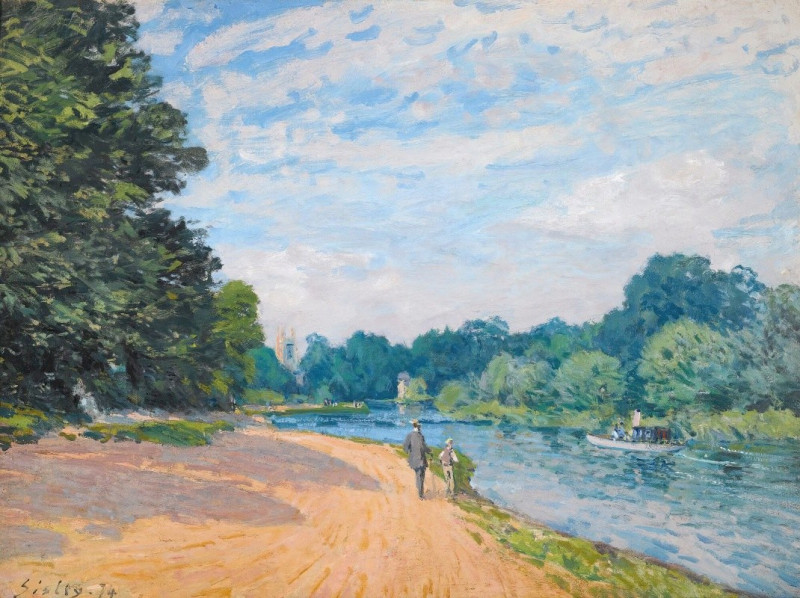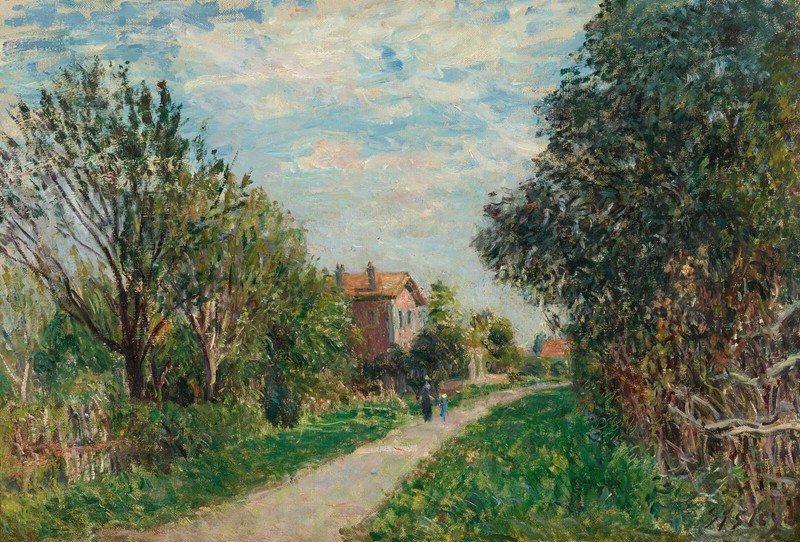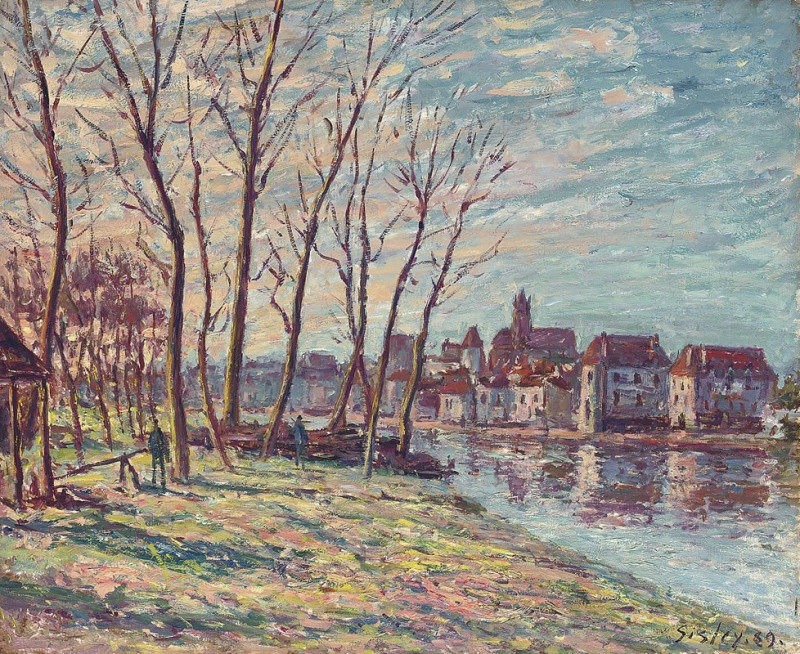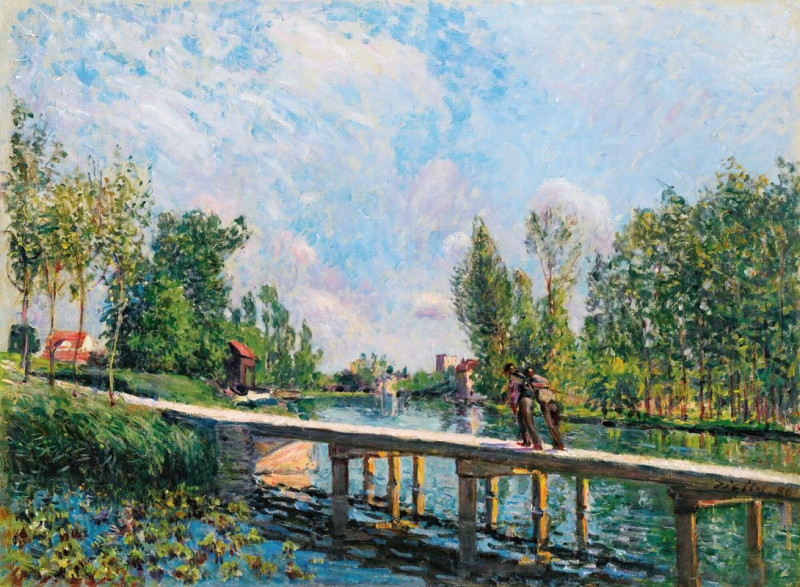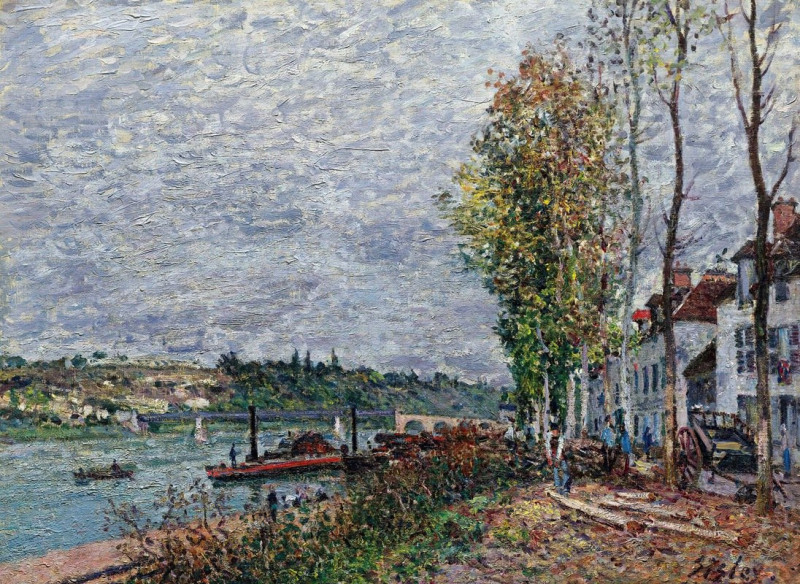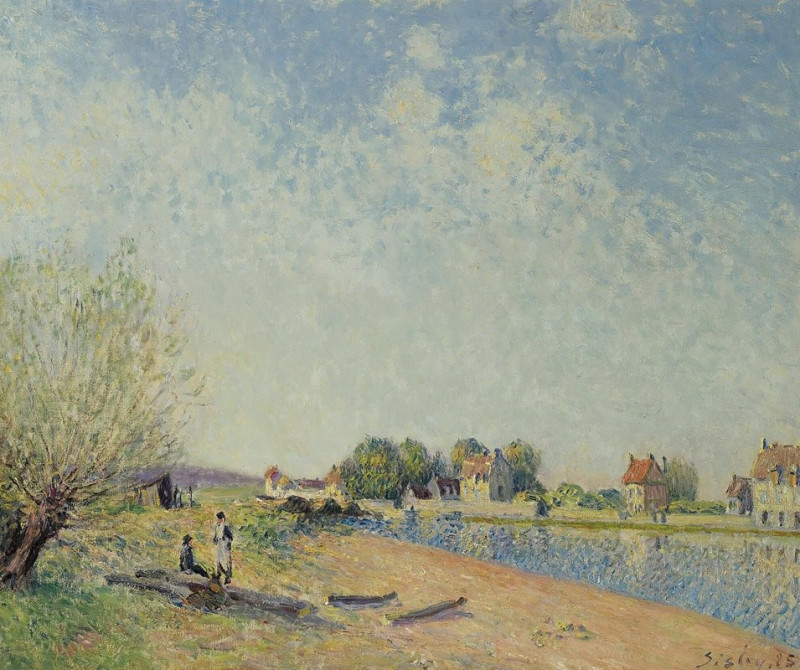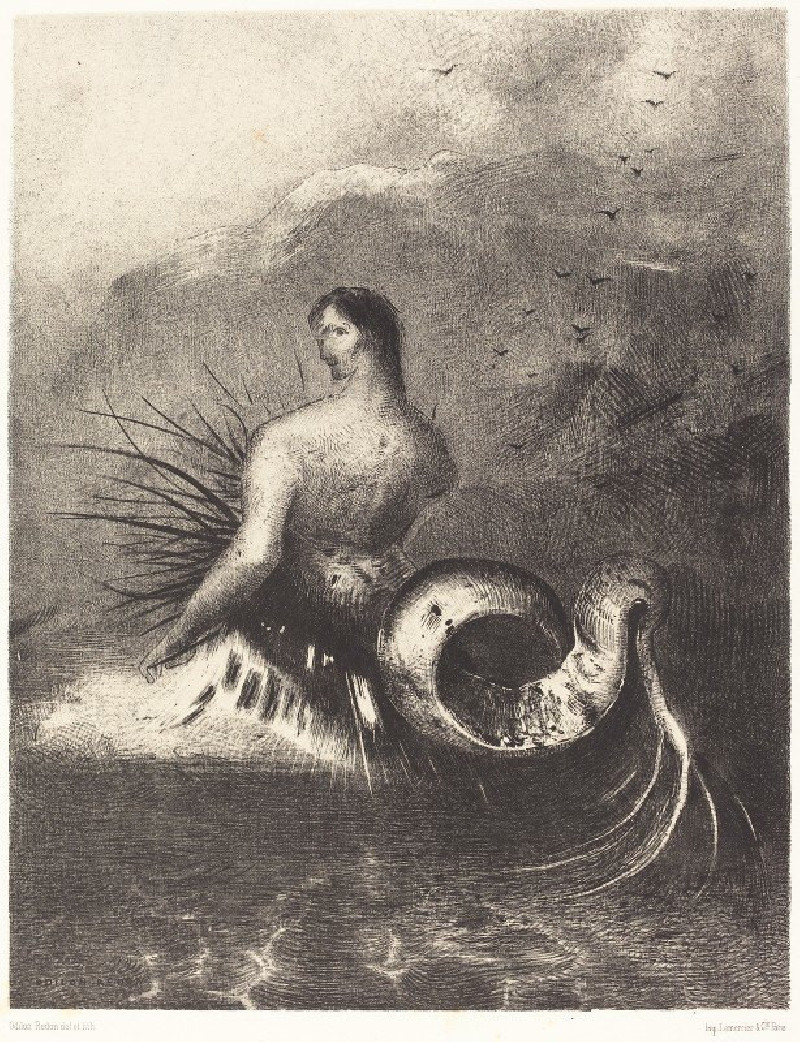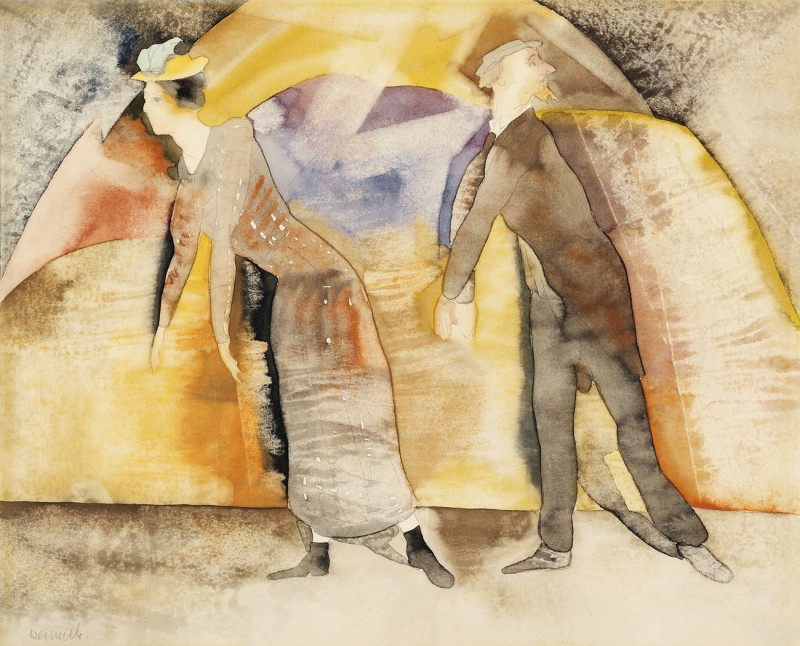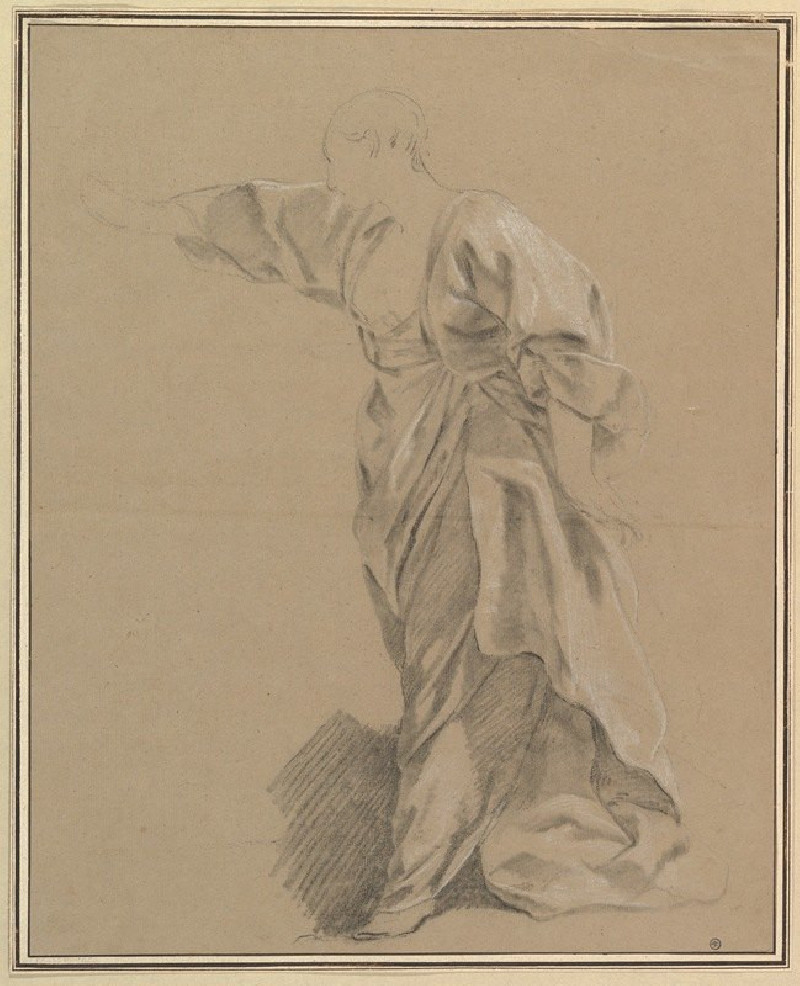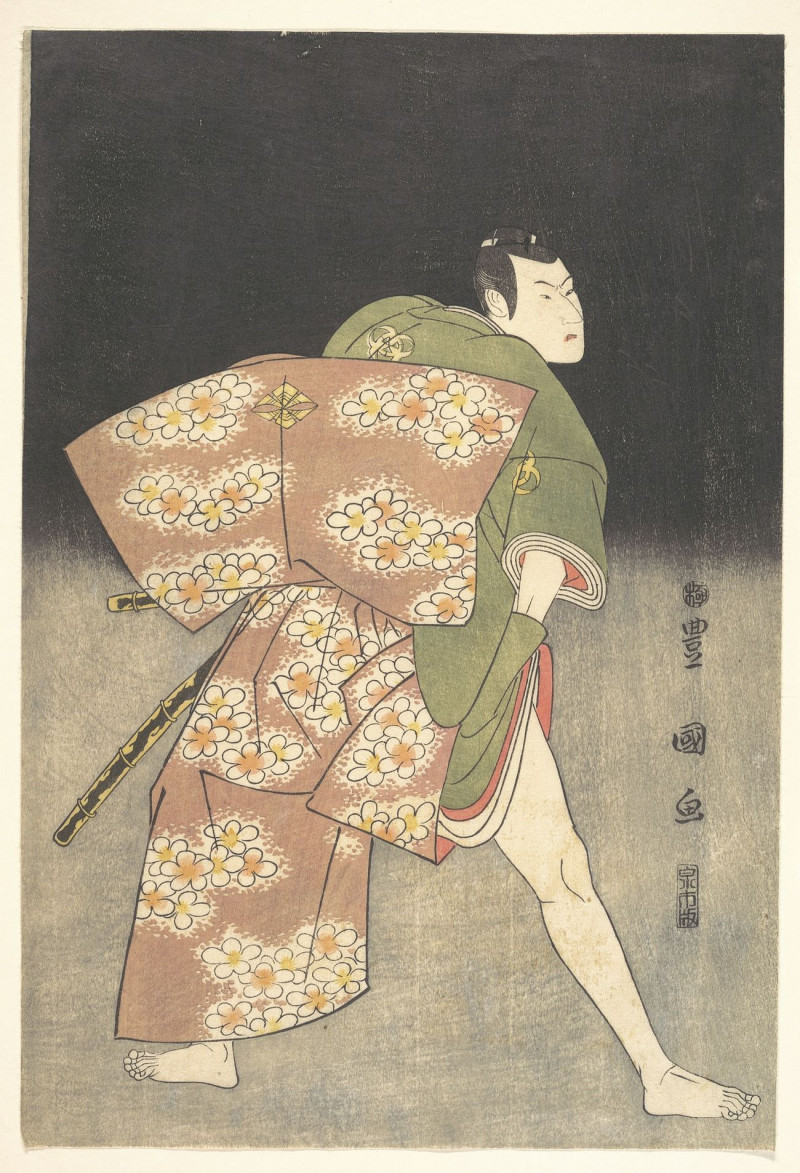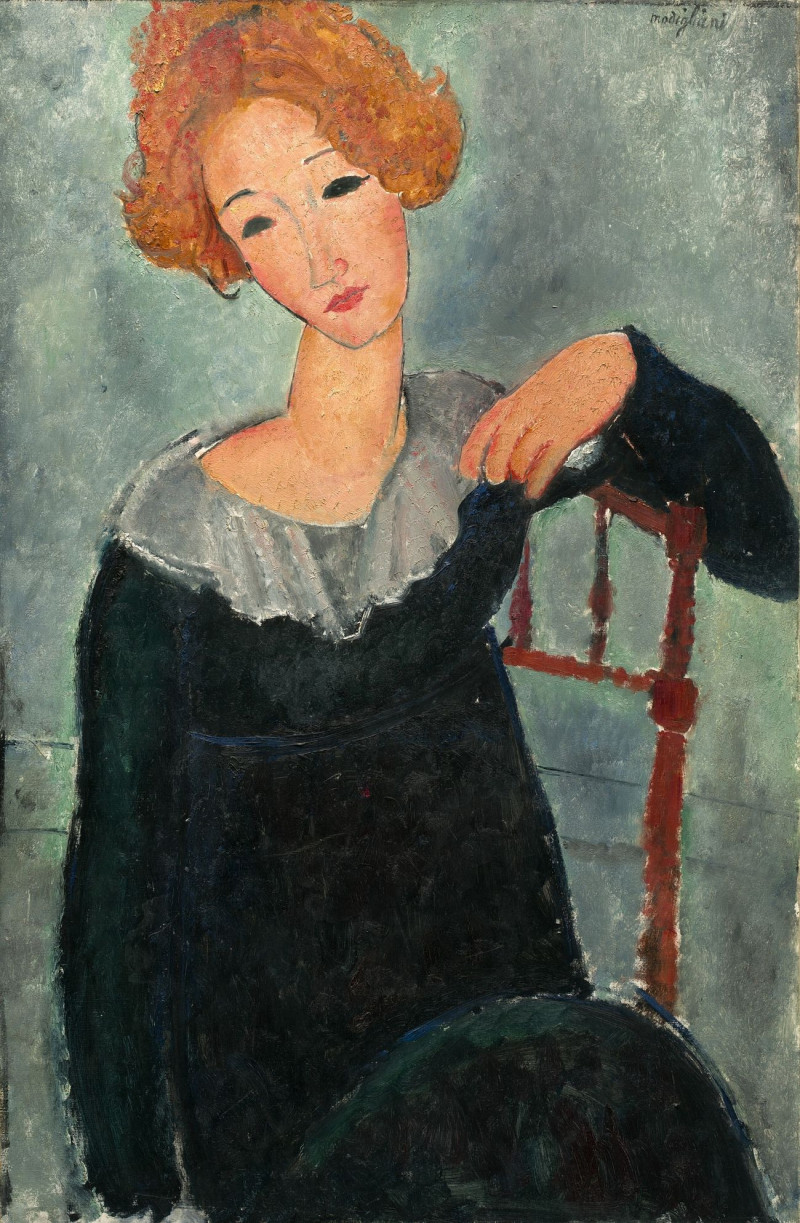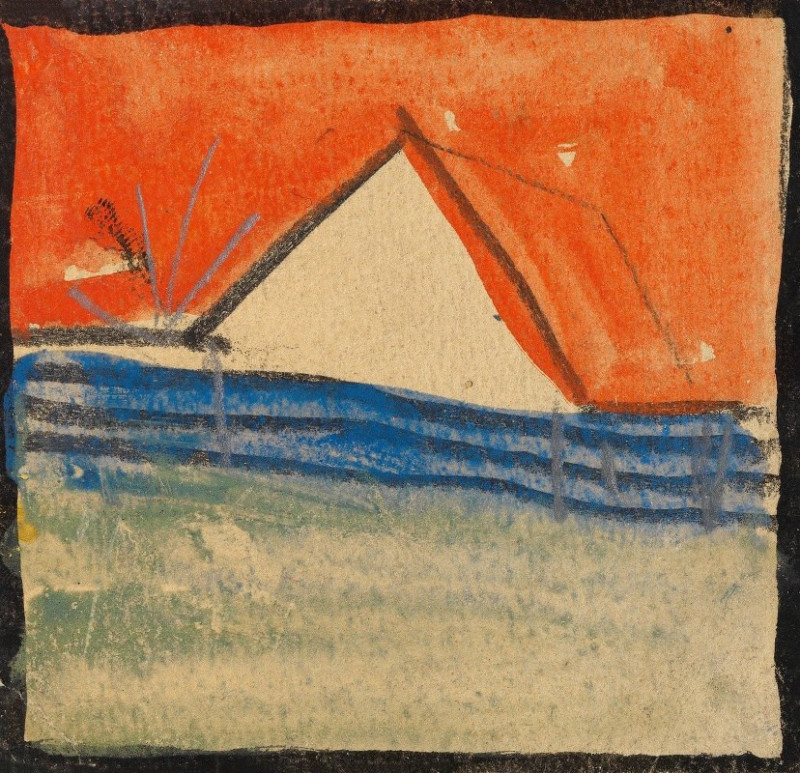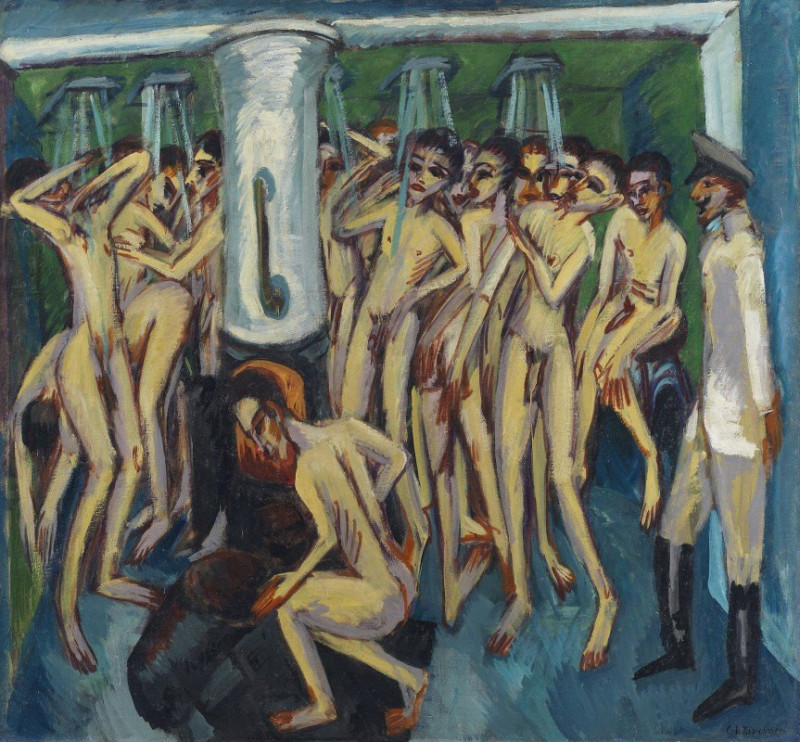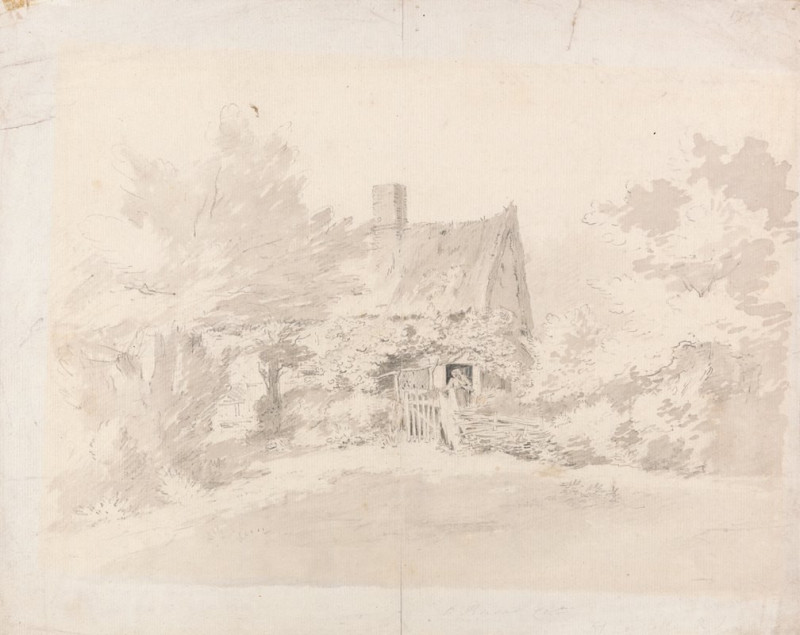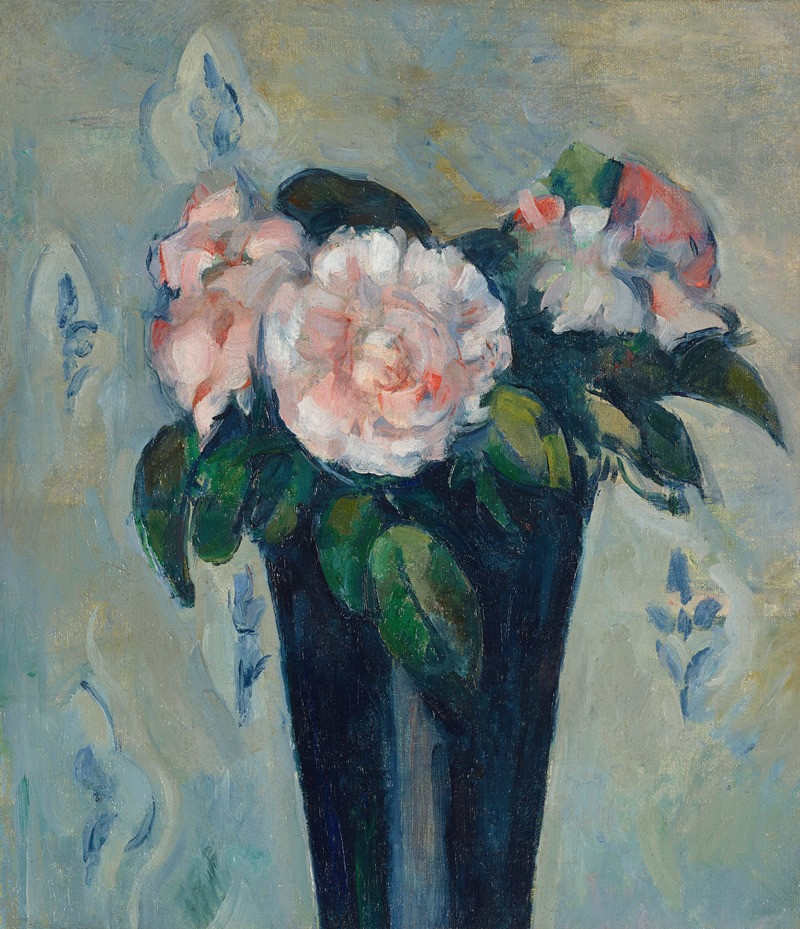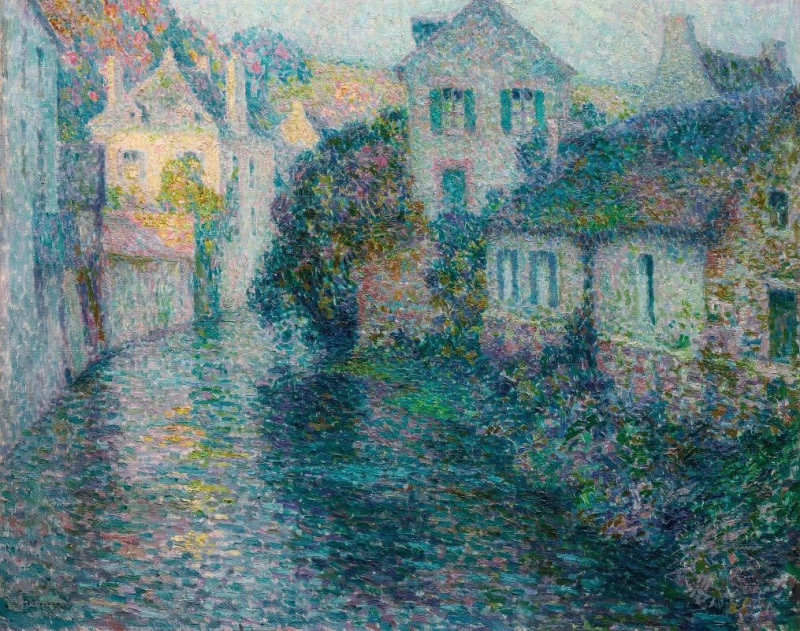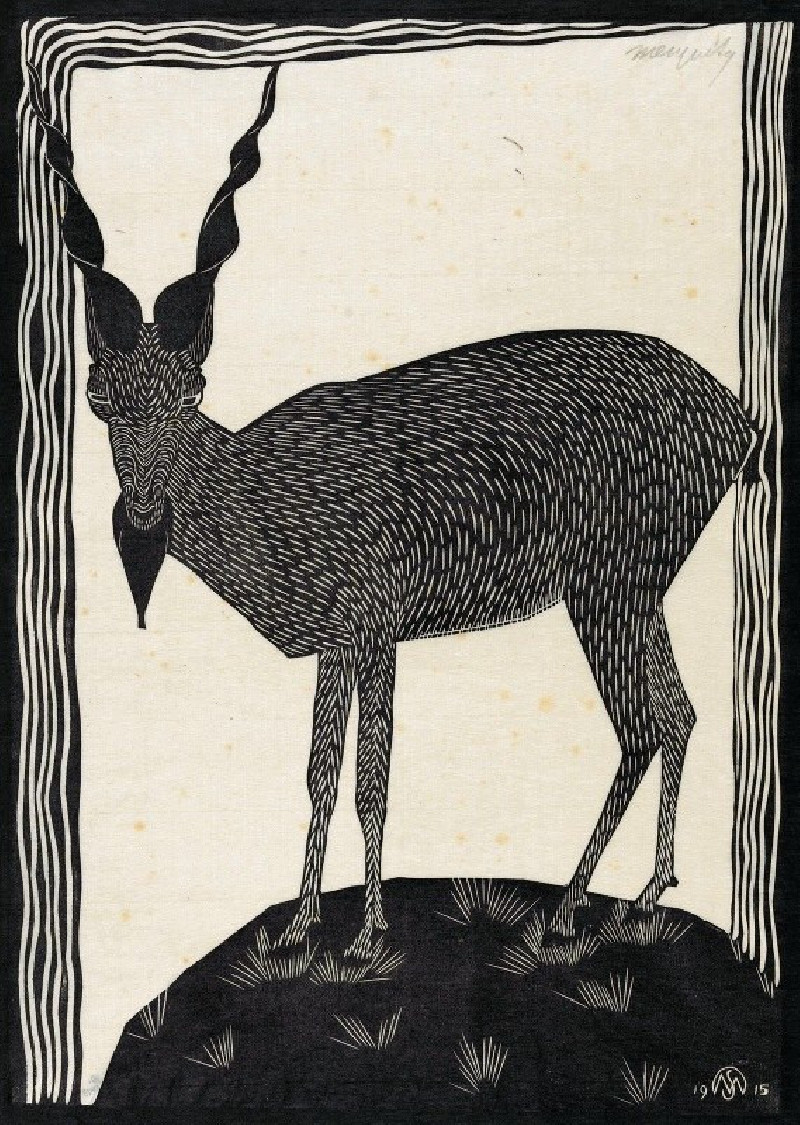Le Loing À Moret, En Été (1891)
Technique: Giclée quality print
Recommended by our customers
More about this artwork
Step into the tranquil scenery of Alfred Sisley's "Le Loing à Moret, en Été," a captivating painting from 1891 that invites viewers into a lush, serene landscape along the banks of the Loing River in Moret-sur-Loing, where Sisley spent the latter years of his life. This masterpiece, steeped in the enchanting light and atmosphere of a summer day, is a quintessential example of Sisley’s impressionist style.In the foreground, the artist portrays a rural path lined with vibrant greenery and tall, elegant trees that sway gently under the expansive blue sky. The natural brushstrokes and light dappled through the leaves create a vivid sense of movement and life. A solitary figure, possibly a local villager, enhances the scene's quietude as he ambles leisurely along the pathway, symbolizing man’s harmonious existence within nature.The middle ground is dominated by a peaceful expanse of the Loing River, reflecting the sky above in a mirrored dance of blues and whites. Sisley's skillful use of light captures the shimmering surface of the water, dotted with lily pads and edged by lush riverbanks. The composition gracefully guides the viewer’s eye towards the historic village of Moret-sur-Loing in the background, its quaint architecture nestled among the trees, adding a rich sense of depth and tradition to the composition."Le Loing à Moret, en Été" by Alfred Sisley not only depicts a beautiful rural setting but also embodies the essence of Impressionism—capturing the fleeting moments of light and color with emotional depth and technical brilliance.
Delivery
Returns
Alfred Sisley (1839–1899), an English impressionist artist, was renowned for his breathtaking impressionist landscape paintings. Born in 1839 to a wealthy family in Paris, Sisley spent most of his life in France. Despite being intended for a career in commerce, he rebelled and pursued his passion for painting as an amateur in the studio of Charles Gleyre, where he befriended artists Claude Monet and Pierre-Auguste Renoir. The financial loss of his family in the Franco-German War led Sisley to make a career out of his art, though it left him financially distressed. It wasn't until after his passing in 1899 that the true value of his work was recognized.

